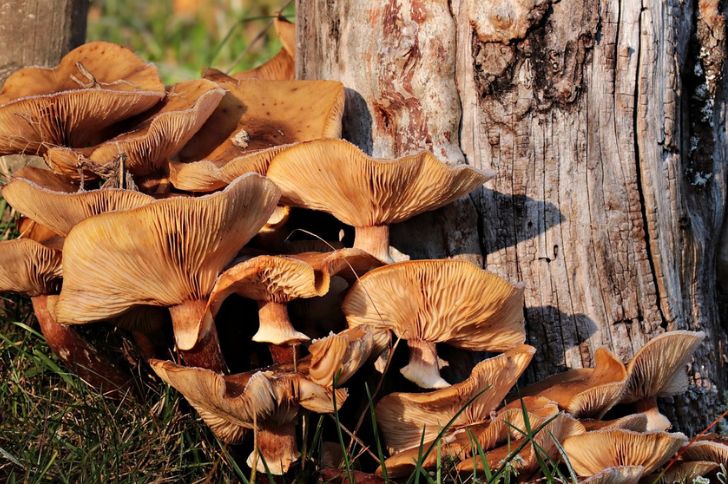New Mexico is a desert state, but it is also home to diverse fungi. With its unique climate and terrain, this state provides an ideal environment for hundreds of different species of mushrooms.
These fungi thrive in the arid, rocky landscapes of the state, providing locals and visitors alike with an array of mushroom varieties to explore. Below we’ll explore common mushrooms of New Mexico.
List of Mushrooms in New Mexico
1. Blue oysters
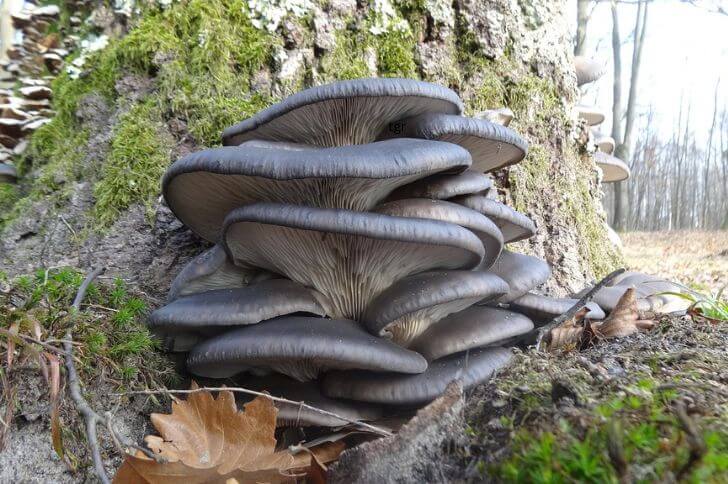
Blue oysters are commonly cultivated by mushroomers in New Mexico. You’ll need a grow kit and arm yourself with some information to get started.
They have a similar taste to their pink and white counterparts but are duller. Blue oysters mushrooms can be identified by their blue-grayish color and fan-like shape. They are also known as “Pleurotus ostreatus” .
2. White King Bolete
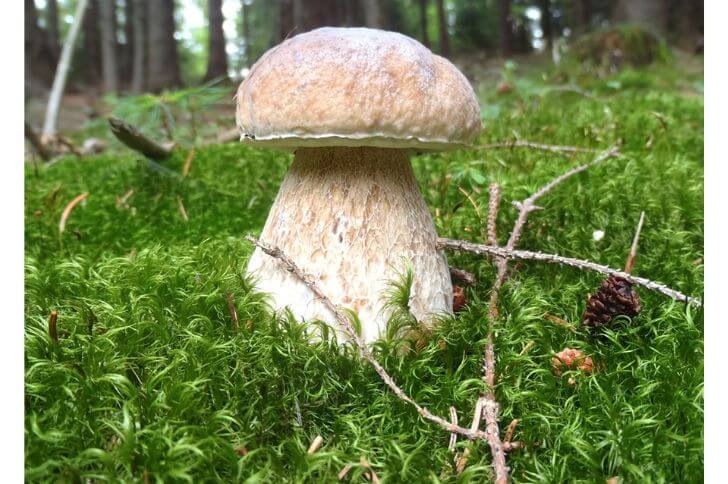
White King bolete mushrooms, scientifically called Boletus barrowsii, are a unique and rare species of mushroom in New Mexico. These mushrooms have an unmistakable appearance, making them relatively easy to identify in the wild.
The cap ranges 2-10 inches. It starts out convex shaped and flatten out with time. Like the boletus edulis, they have club-shaped stems. When sliced, they have white flesh that does not discolor. If it stains to blue, that is not a bolete.
White King boletes have pores on their undersides that will turn yellow with age. They pop out after the first rain.
3. Shrimp Russula (Crab Brittlegill)
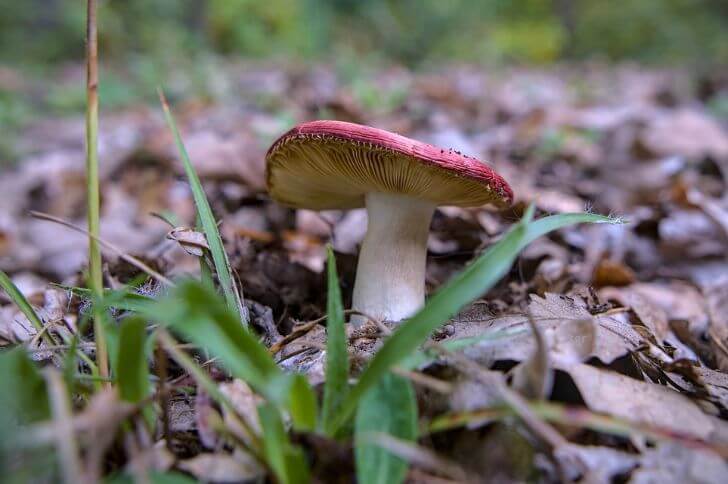
Another mushroom found in the Land of Enchantment is the shrimp russula. These delectable morsels can be found around douglas fir during late spring and summer.
These New Mexico fungi are small with a convex cap measuring around 2.5-8 inches in diameter. The cap is typically reddish-purple to brown in color while the gills underneath are white or cream-colored.
When cut open, these mushrooms often have a mild shrimp-like smell which helps differentiate them from other types of russulas.
Additionally, its white stem is usually thick and fragile compared to other mushrooms with similar caps. What do these russulas taste like? Taste is described as bitter. But gills can be removed to improve its taste.
4. Morels
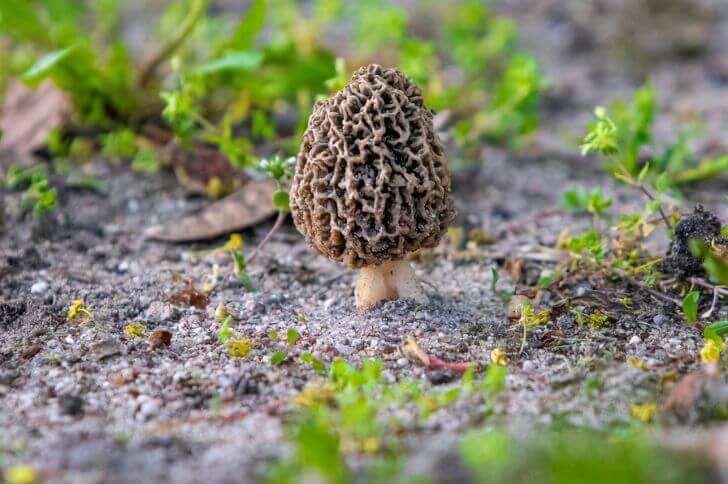
Are there morels in New Mexico? Yes, they occur in high elevations mostly in the Central New Mexico mountains. There are various types of morels that grow in this region.
Morchella prava: This morel grows in damp woodlands or along riverbanks. Morchella prava stands out among other morels due to its ‘deformed’ look.
Its canonical cap is typically yellowish-brown with noticeable pits and ridges. Like other morels, they are hollow with short stems.
Morchella americana: this morel is lighter in color compared to the morchella prava. The cap typically has a pale gray color with ridges running throughout it that form a honeycomb pattern.
The stalk is usually white or cream in color with ridges running along it as well. Additionally, this species grows in clusters near dead trees or stumps that are decaying and are usually found during early springtime when temperatures start to rise above 50 degrees Fahrenheit.
Morchella angusticeps : These black morel mushrooms are a deliciously earthy tasting gourmet mushroom that can be hard to spot in the wild.
With its distinct ridged cap and hollow stem, this delectable fungus grows in wooded areas starting in early April. This Nevada morel has a firm texture and nutty flavor that makes it popular.
5. Lobsters
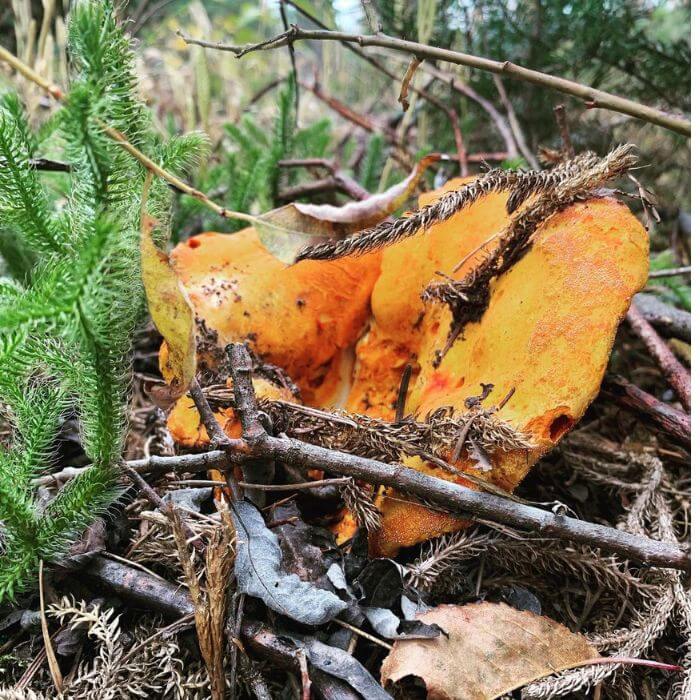
source:champignon_boreal
With a crazy name and a distinctive look, these orange mushrooms of New Mexico are hard to miss. And because there are no close lookalikes, you can easily pick them out even as a novice forager.
These New Mexico fungi have an orange-red exterior that can grow up to 6 inches across. They are known for their thick fleshy bodies and distinctive funnel shape.
What do these large mushrooms taste like? If you enjoy seafood, you’ll love its crustacean-like flavor. You can find them in the wild or at a local farmers market.
6. Bleeding Tooth Fungus
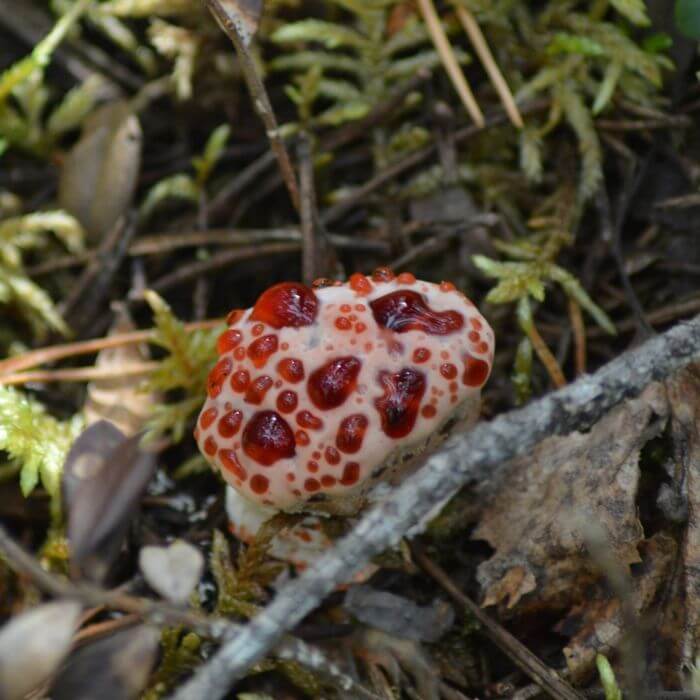
source:aalectaa
Simply stunning! Bleeding tooth fungus is one of the prettiest mushrooms in New Mexico. Like the lobster above, it’s easy to identify.
Also known as Hydnellum peckii, is a unique and rare species of fungal mushroom that is easily identified by its blood-red fluid which appears on the surface of the mushroom when it is disturbed or cut.
This fungus has an irregularly shaped cap with raised ridges and a white underside with little ‘teeth’.
7. Aspen Oysters
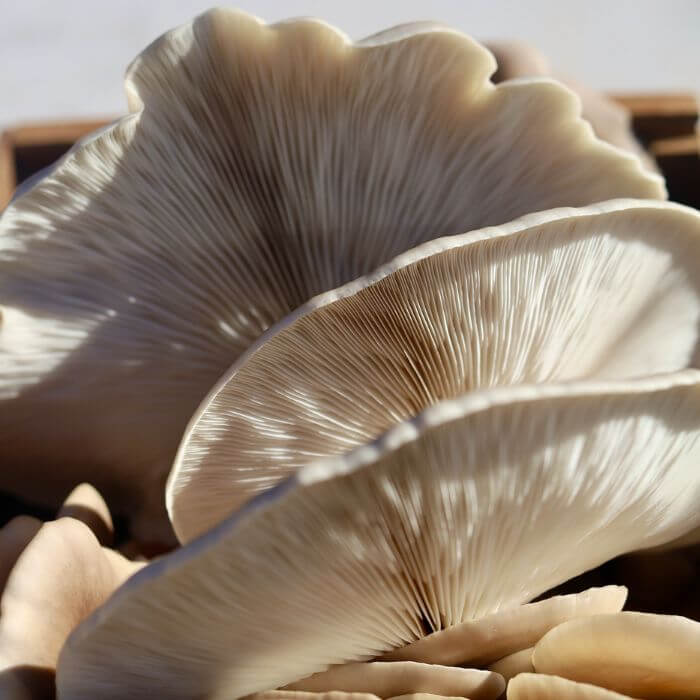
Aspen Oysters can be found growing in the wild or cultivated commercially. Identified by their creamy-colored fan-shaped caps, these aspens belong to the popular oyster mushroom family.
They favor mountainous areas around cottonwoods or aspens. It grows on living as well as dying or even dead trees. They are a spring to summer fungus.
Aspen oysters can grow to 6.5 inches with no stem. These mushrooms also have white flesh that does not stain. They can be mistaken for common oysters and veiled oysters. Are aspen oysters edible? Yes, you can use them in mushroom tacos and steamed buns.
8. Fly Agaric
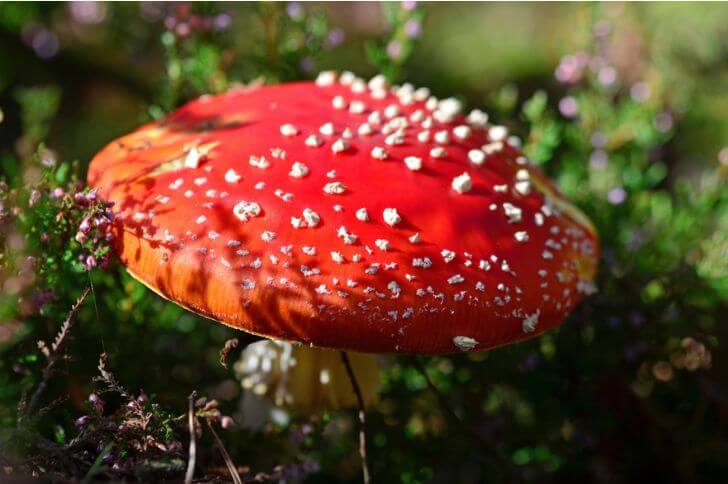
Fly agarics are common in New Mexico. Also called amanita muscaria they are easily identifiable by their distinct bright red caps dotted with white warts. Their stems are usually white with a volva at the base.
The mushroom’s cap can measure anywhere from 3-8 inches in diameter and its stem is typically 2-8 inches tall. These amanitas are inedible.
9. Hemlock Varnish Shelf (Ganoderma Tsugae)
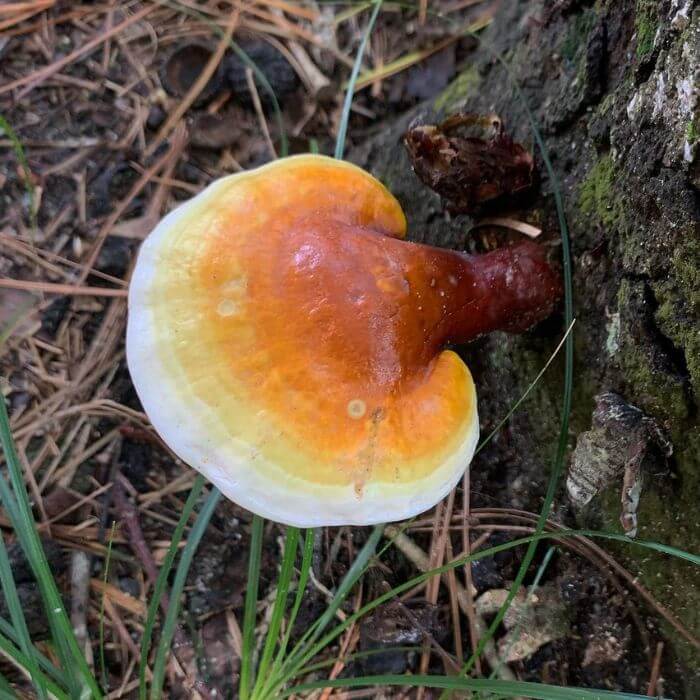
source:toadstool_tee
Because of its weather conditions, New Mexico is home to a lot of polypores. One of the most common shelf mushrooms is the hemlock varnish shelf. It is a striking polypore that is mostly reddish-orange with yellow margins.
They can be identified by their fan-shaped structure and thick fruiting bodies. Like most polypores, they are inedible. However, because of their thick woody body they can be dried and used to make teas.
10. Boletus Rubiceps
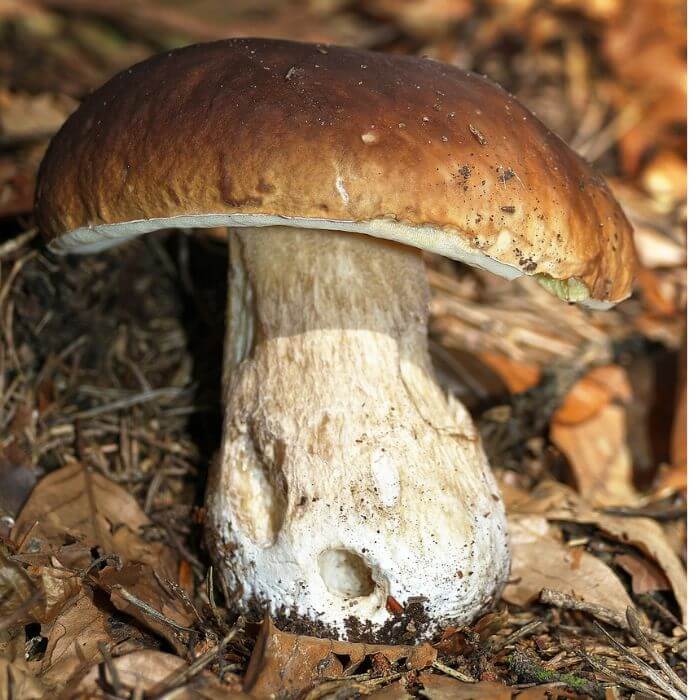
Boletus rubiceps, also known as the ruby porcini or rocky mountain red, is widely recognized for its unique look and flavor.
It is a type of Boletaceae fungus that is characterized by a large cap that ranges 3-8.6 inches in diameter and is reddish brown in color.
Its stipe can reach up to 7 inches in length and has an off-white or light brown hue with a notable reddish tinge near the top.
The spongy underside of Boletus rubiceps’ cap is made up of small pores that range from whitish when young, but turn yellowish with age.
These mushrooms are most commonly found on the ground underneath coniferous trees during late summer and fall months.
11. Western Giant Puffball
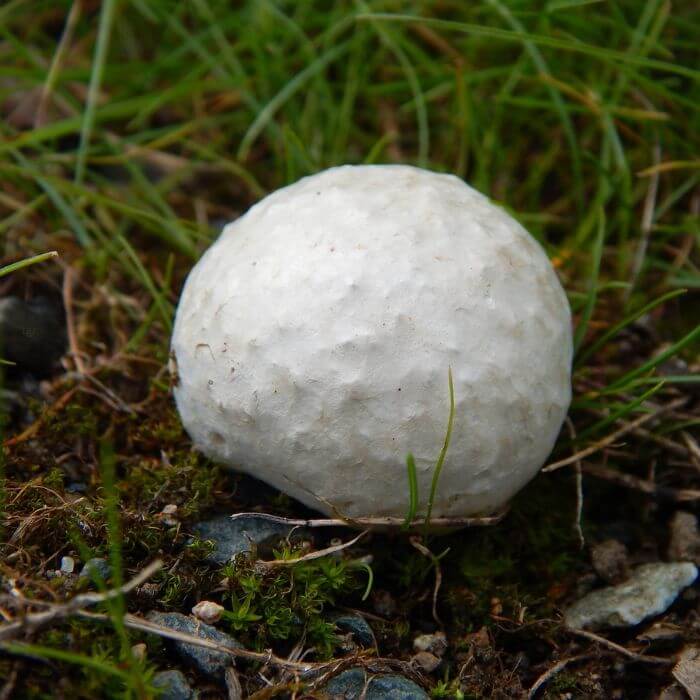
The Western giant puffball mushroom is a unique and fascinating species of fungus. Its large size and distinctive texture make it easy to identify.
Found in grassy areas throughout parts of New Mexico, this type of mushroom can grow up to 2 feet in diameter. As a result, they are one of the largest mushrooms found in the region.
The Western giant puffball is usually white or cream colored when young and becomes yellowish-brown as it matures. Additionally, unlike its cousin the giant puffball, this mushroom has a bumpy surface.
Furthermore, when cut open, its inside should be pure white without any gills or pores like those seen on other mushrooms on this list.
12. Man on Horseback (Tricholoma equestre)
Tricholoma flavovirens, commonly known as the yellow Knight mushroom, is a species of gilled mushroom that is inedible. Its distinctive yellow-brown color makes it easy to identify in the wild.
Also called man on horseback, it can be easily spotted by its large cap, which ranges between 2 to 6 inches wide.
The cap surface is smooth with a wavy margin. Additionally, the gills are thick and widely spaced and yellow colored with a white spore print. The stipe is typically 1-4 inches tall.
13. Orange Jelly Spot (Dacrymyces Chrysospermus)
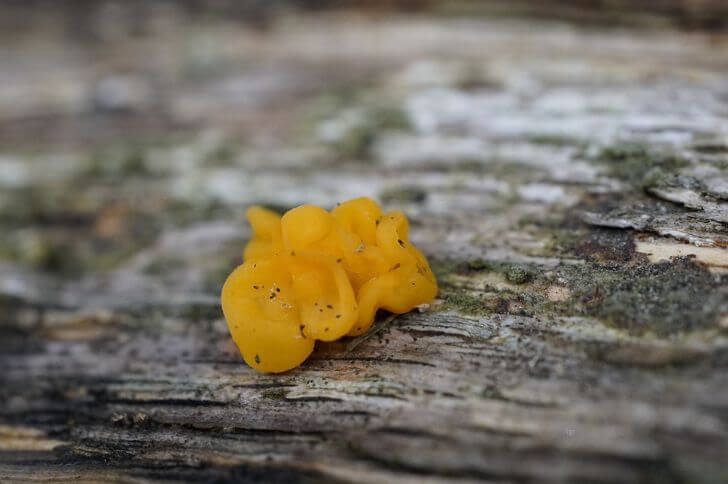
Dacrymyces chrysospermus, commonly called the orange jelly spot, is a small yellow fungus that grows gregariously. It typically grows on rotting wood or debris of conifer trees.
Its distinguishing features are its vivid orange-yellow color and brain-like fruiting body. It can often be mistaken for the witch’s butter due to their similar appearance.
14. Hemipholiota Populnea
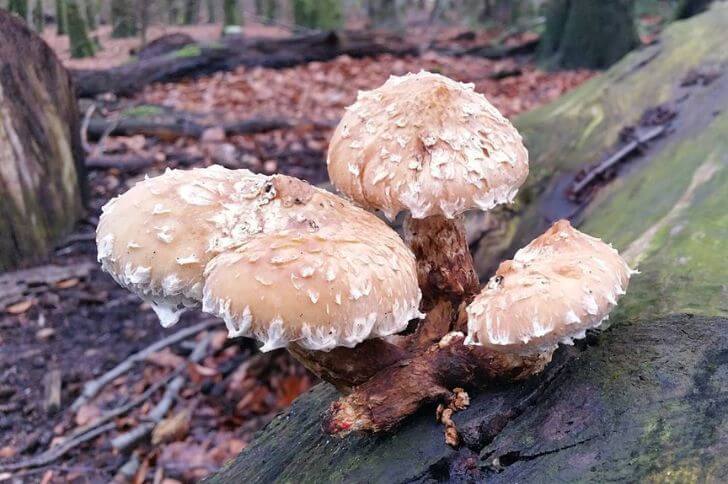
source: tinygramat
Hemipholiota populnea grow on decaying logs. Convex shaped cap is typically brown with whitish scales on its margin. Whitish gills characterize its underside young species while older hemipholiota populnea have brownish thinly spaced gills.
The cap measures 3–10 inches across and 4 inch stipe while mature.
15. Exidia Recisa (Willow Brain)
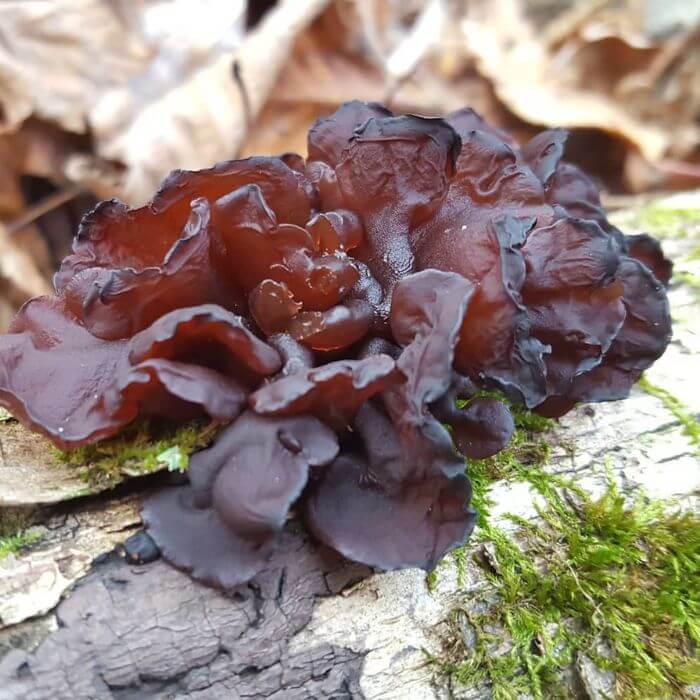
source:uncapd
Exidia recisa, commonly known as the amber jelly roll, is a gelatinous fungus with a brown hue and waxy texture. It typically appears on dead or decaying branches and twigs of hardwood trees during the late summer months.
FAQs
What types of mushrooms grow in New Mexico?
The state’s diverse climate and terrain contribute to its mushroom population. Many species thrive in alpine meadows or high-elevation coniferous forests.
The Rocky Mountains provide an ideal habitat for some of the most cherished edible mushrooms such as chanterelles, porcini, oyster mushrooms, shaggy manes and morels.
While some areas are known for specific types of mushrooms, others present a wide variety ranging from boletes to coral fungi.
Are there puffball mushrooms in New Mexico?
Yes. In New Mexico, these mushrooms can be found growing in grassy areas. While some species may occur naturally in the region, others have been introduced by mushroom hunters from other parts of the country.
In New Mexico, puffballs range from small to large depending on their species and age.
Are there edible mushrooms in New Mexico?
The answer is yes! There are many varieties of edible mushrooms that can be found in New Mexico’s forests.
Many common species such as Boletus edulis (porcini), Cantharellus cibarius (chanterelle) and Lentinula edodes (shiitake) can be found throughout the state.
Can you find truffles in NM?
The answer is yes! While not as common as other types of mushrooms, truffles can be found in New Mexico.
They most commonly appear during the late summer months when cooler temperatures make them easier to detect with trained truffle dogs or pigs.
The most common species of truffle found in the state is called pecan truffle which has an iconic earthy aroma and flavor.
sources:
Hi There,
My name is Jenny. I’m the Chief Editor at Try Green Recipes and besides making yummy and healthy foods for my kids, grandkids, and friends. I’m new to the blogging world but I believe what I have to share is unique and will bring joy to your home. If you are adventurous and want try something tasty, let’s get started.
